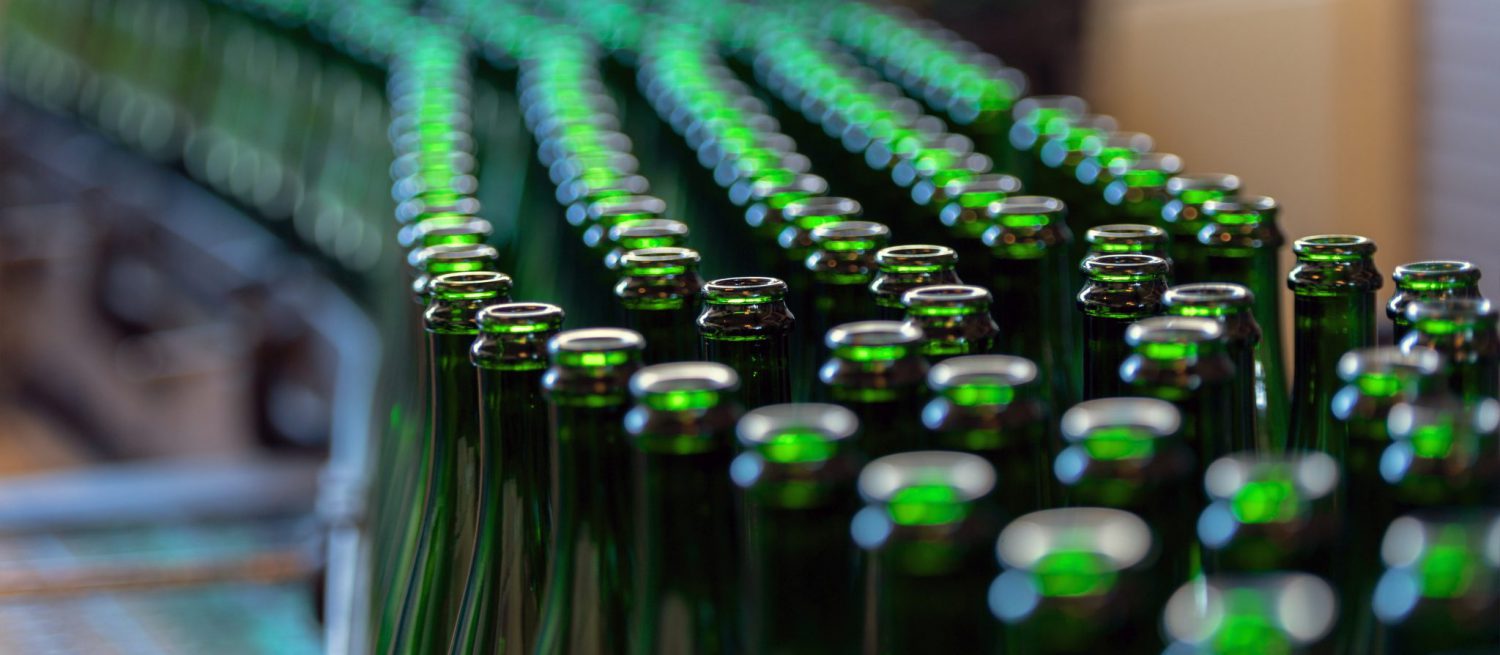
Food & Beverage
Without the aid of atmospheric gases, beverages would be flat, transporting food would be extremely difficult, shelf life would be minimal, and food producers and distributors would have expensive disposal costs. Carbon dioxide and nitrogen play significant roles in food preservation and transportation. Both gases, sometimes used in a mixture, prevent oxygen exposure (which causes unhealthy compounds, unpleasant tastes, and odors) by displacing oxygen in food packaging. Nitrogen improves freezing and refrigeration techniques, and dry ice (frozen CO2) keeps food cold and prevents insect infestation in grains and farm products. Argon is another commonly used gas, as it’s inert and displaces oxygen.
Carbon Dioxide
Perhaps one of carbon dioxide’s best-known uses is as a carbonation method for soft drinks, seltzer water, and beer. Carbonation is not its only purpose, as it also maintains the fresh taste and color throughout production, transfer, storage, and bottling. Beverage companies rely on it to create bubbles, but also to move products between tanks or kegs and cans. Carbon dioxide prevents unwanted oxidation and premature fermentation at breweries and wineries.
Food distributors use dry ice for transportation, as it turns from solid to gas, without liquifying. This sublimination prevents water and residue from accumulating. These dry ice blocks are sanitary, food-grade and FDA approved. Commercial kitchens regularly use dry ice to refrigerate, flash freeze, and store dry goods.
Nitrogen
Modified Atmospheric Packaging (MAP), also known as reduced oxygen packaging, is a blend of carbon dioxide, oxygen and nitrogen that is used to preserve fresh produce, for sparging and brewing applications, for blanketing and purging after packaging, and protection against oxidation.
Moisture inside of packaged food invites unwanted bacteria, mold, and mildew, which is why nitrogen is used to displace oxygen and lock out moisture. More nitrogen is necessary for fresh foods like fruits and vegetables, seafood, meat, and meat products. Dried goods, such as honey and rice, require less nitrogen for packaging.
Nitrogen is also used as a carbonator in specialty beverages, as it produces a different type of carbonation than carbon dioxide. Carbon dioxide is 50 times more soluble in water than nitrogen, creating larger bubbles for extra fizziness. Nitrogen produces less aggressive bubbles for a finer taste. It’s used for nitro brew coffee, kombucha and teas, and some craft beers.
Argon
Argon is used in the beverage industry to displace oxygen in spaces as small as a bottle and as large as a barrel. That little burst of rising steam when a cork is popped off a bottle of wine is created courtesy of argon. Any area of a wine bottle or barrel that is not filled with liquid is occupied by some form of gas to lock in freshness during storage. A drop of the inert gas is placed in the headspace before the cork seals the bottle, displacing oxygen and maintaining the wine’s freshness.
Rocky Mountain Air strives for flawless execution when providing food and beverage grade gases for your business. Gases and related equipment for food preservation and refrigeration are available for delivery. RMA serves manufacturing and packaging facilities, breweries, bottlers, and restaurants. We get products to you quickly, so that you can keep the production lines moving, make deliveries on time, and keep the beverages flowing. Contact your local branch today. We look forward to serving you with flawless dependability!
